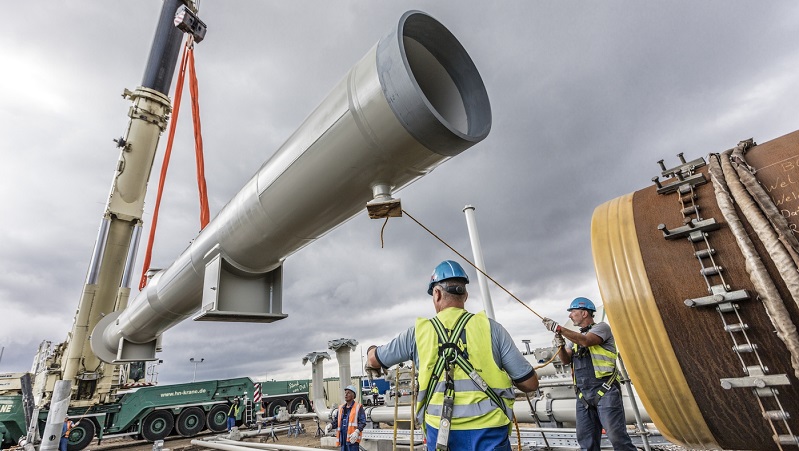Investment in new fossil fuel production and unabated coal power needs to end this year, if the global energy sector is to reach net zero emissions by 2050.
So says the International Energy Agency (IEA) in its first ever comprehensive scenario to align energy development with a 1.5C limit on global heating, the strongest goal in the Paris Agreement.
The special report published on Tuesday states “beyond projects already committed as of 2021, there are no new oil and gas fields approved for development in our pathway, and no new coal mines or mine extensions are required”. “Net zero means a huge decline in the use of fossil fuels,” the agency said.
The IEA described the pathway to building a net zero energy sector in the next 30 years as “viable” but “narrow and extremely challenging” and one that “requires an unprecedented transformation of how energy is produced, transported and used globally”.
Long criticised for underestimating renewable energy and overstating the role of fossil fuels, the agency’s net zero scenario has been welcomed by analysts and campaigners as a break from its previous modelling.
“This is a very significant moment. It’s the first time the IEA has released a scenario that is properly aligned with the Paris [Agreement] goals,” Greg Muttitt, senior policy advisor on energy supply at the International Institute for Sustainable Development, told Climate Home News.
“It’s a huge shift to have the IEA joining global calls for ending fossil fuel extraction,” Kelly Trout, senior research analyst at Oil Change International. “Oil companies have previously used IEA scenarios to justify ongoing fossil fuel expansion. The fossil fuel industry is losing one of its biggest sources of shelter,” she told Climate Home.
Spain to end fossil fuel production by 2042 under new climate law
To decarbonise the power sector by 2050, the IEA expects richer nations to reach carbon neutrality in their energy sector before developing countries.
By 2050, the IEA assumes global energy use will shrink by around 8% while serving an additional two billion people and a global economy it anticipates to be twice as big.
Under this scenario, sales of new internal combustion engine cars would end by 2035 and the global electricity sector would achieve net zero emissions by 2040.
Renewable sources, including wind, solar, bioenergy, geothermal and hydro energy, replace fossil fuels in the power system to provide two-thirds of total energy supply and almost 90% of electricity generation by 2050. Wind and solar panels alone account for around 70% of electricity generation by 2050.
Meanwhile, fossil fuel use falls from providing almost four-fifths of total energy supply today to slightly over one-fifth by 2050. Oil and gas continue to be used in the manufacturing of carbon-intensive goods such as plastics, cement and steel, in facilities fitted with carbon capture technology.
Unabated coal power generation ends in advanced economies by 2030 and everywhere else in 2040, when unabated oil plants are also be phased out.
By 2050, the IEA projects a drop in oil demand of 75% and gas of 55% from 2020 levels.
Want more climate news? Sign up to get updates straight to your inbox
Established in the wake of the 1973 oil crisis to ensure the security of oil supplies, the IEA has sought to make itself relevant to the energy transition while continuing to appeal to its oil-producing funders.
For Muttitt, this has created a conflicting identity at the core of the IEA’s mission. “You can’t protect the role of international oil companies at the same time as achieving the Paris goals,” he said.
“Now that the IEA is taking the Paris goals seriously, it is running into the [fact] that there is no room for oil, gas and coal. This is a fundamental break from what the IEA has said before.”
Under the IEA’s net zero scenario, oil and methane gas production becomes concentrated among a small number of low-cost producers, with “far-reaching” economic and social implications.
Oil and gas producing economies see their annual per capita income fall by about 75% by the 2030s. While new sources of revenue will be needed, “these are unlikely to compensate fully for the drop in and oil and gas income,” the report said.
Countries like Angola, Equatorial Guinea and South Sudan are among the most vulnerable countries to declines in oil and gas revenues in coming decades, according to analysis by Carbon Tracker. In Equatorial Guinea, 81% of government revenues come from oil and gas.
“Wealthy producers that are relatively less dependent on oil revenues should be moving first and fastest to help countries that will have a tougher time with this,” said Trout. “It’s imperative that countries like the UK, Norway, the US, Canada and Australia take this as a wake up call to think about their role in a global equitable phase out of fossil fuel production.”
The IEA’s scenario includes a rapid deployment of carbon capture and storage (CCS) technology in the 2030s that allows some oil and particularly gas to remain in the power system by 2050 – continuing the world’s reliance on “polluting” energy sources, Trout said.
Pointing to the technology’s slow deployment, Trout said the pace of CCS roll out set out by the IEA “appears widely optimistic”.
Joeri Rogelj, a scientist at Imperial College and a lead author on the International Panel on Climate Change’s (IPCC) 1.5C report, told Climate Home that if the IEA’s projected levels of carbon capture couldn’t be delivered, the amount of gas in the power system by 2050 would need to be lowered.
“Can technology infrastructure be scaled up rapidly and efficiently? That is the key to the discussion that we need to have,” he said.
The IEA has promised to make its net zero scenario an “integral part” of its flagship annual publication, the World Energy Outlook (WEO), which guides policymakers and investors.
“I hope that this marks a permanent shift at the IEA and that this is not just a one off,” said Muttitt.
